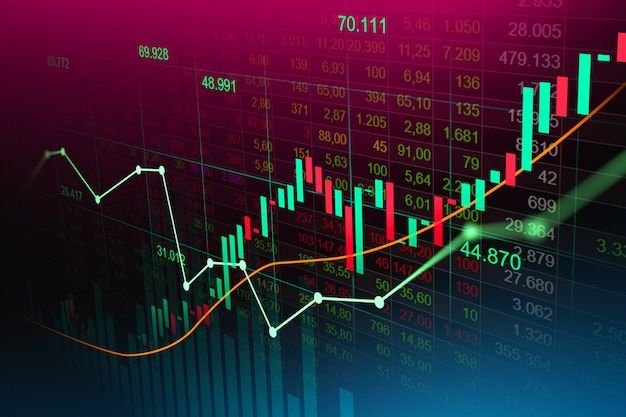Investing in stocks has become more expensive due to rising brokerage fees, taxes, and other related charges. Investors must be aware of these costs as they directly impact returns. The interim budget of July 2024 introduced key tax changes, including an increase in Short-Term Capital Gains (STCG) tax to 20%. Several other taxes and charges also apply, making it essential to understand the complete cost structure of stock market investments.
Why Investors Choose the Stock Market
Many individuals opt for stock market investments over traditional options like fixed deposits due to the potential for higher returns. Stocks often outperform other financial assets in the long run. However, these gains come with associated costs, including brokerage charges, government taxes, and various fees imposed by stock exchanges and regulatory bodies.
Key Components of Investment Costs
When investing in stocks, investors must account for multiple fees and taxes. Below are some of the key components:
1. Brokerage Charges
A broker acts as an intermediary for executing stock transactions and charges a commission for their services. The brokerage fee varies based on the type of broker chosen:
- Full-Service Brokers: These brokers provide research reports, advisory services, and portfolio management in addition to executing trades. Their brokerage fees range from 0.01% to 0.5% per transaction.
- Discount Brokers: These brokers offer only trade execution services at a lower cost, charging between ₹10 to ₹20 per trade for intraday and delivery trading. Some discount brokers do not charge for delivery trades.
Investors should note that brokerage fees apply on both the buying and selling sides of a transaction. Some brokers also charge an Annual Maintenance Charge (AMC) for maintaining a Demat account.
2. Securities Transaction Tax (STT)
Introduced in 2004, STT ensures tax compliance on capital gains. It is levied directly on stock transactions. The 2024 interim budget revised STT on futures trading to 0.02%, with intraday STT set at 0.025% on the total transaction value.
3. Stamp Duties
Stamp duty varies by state and is charged on both buy and sell transactions. The standard rates include:
- Equity Intraday: 0.003% on buying
- Equity Delivery: 0.015% on buying
- Futures & Options (F&O): 0.002% on futures and 0.003% on options (buying only)
4. Transaction Charges
Both the National Stock Exchange (NSE) and Bombay Stock Exchange (BSE) impose transaction charges:
- NSE: 0.00297% on equity delivery
- BSE: 0.00375% on turnover
From October 1, 2024, NSE will lower transaction fees for equity futures from ₹1.88 per lakh to ₹1.73 per lakh, providing some relief to investors.
5. SEBI Turnover Charges
The Securities and Exchange Board of India (SEBI) regulates stock market transactions and imposes a turnover charge of 0.0001% on both buy and sell trades.
6. Depository Participant Fees
Depository participants (DPs) facilitate the electronic holding of shares via CDSL and NSDL. While these depositories do not charge investors directly, brokers pass on depository costs, typically ₹10 to ₹20 per trade, only applicable to delivery-based trades.
Capital Gains Tax in Stock Market Investment
Capital gains tax applies when investors sell stocks for a profit. The taxation varies based on the holding period.
1. Short-Term Capital Gains (STCG) Tax
- If stocks are sold within 12 months, the gains are categorized as short-term.
- The previous STCG tax rate was 15%, but it was raised to 20% in the 2024 interim budget.
- Additional cess and surcharges apply irrespective of the investor’s income bracket.
- Exemptions: Investors can avail tax relief under Section 54B and 54D, applicable for reinvestment in agricultural or industrial assets.
2. Long-Term Capital Gains (LTCG) Tax
- Gains from stocks held for over one year are classified as long-term.
- The tax-free exemption limit was ₹1 lakh per year until July 22, 2024.
- LTCG tax was 10%, but it was increased to 12.5% under the new tax regime.
- Exemptions: Investors can reduce their LTCG tax liability through Sections 54, 54B, 54D, 54EC, and 54F by reinvesting in specific assets.
How to Calculate Investment Costs?
Calculating investment costs is crucial for optimizing returns. The Weighted Average Cost (WAC) method is commonly used to determine the cost per unit of an investment. The formula for WAC is:
WAC = (Total Investment Cost) / (Total Units Purchased)
Steps to Calculate WAC:
- Determine Investment Amount: Track the price and total funds invested.
- Calculate Weighted Average Cost: Apply the WAC formula for accurate cost assessment.
- Adjust for Withdrawals: Recalculate WAC after each transaction to monitor real-time investment costs.
Ways to Reduce Stock Market Investment Costs
Investors can adopt various strategies to minimize transaction costs:
- Compare Brokers: Choose cost-effective brokers with competitive brokerage fees.
- Negotiate Commissions: Some brokers allow negotiations based on trading volume.
- Optimize Order Sizes: Placing larger orders can help reduce per-unit costs.
- Invest in ETFs: Exchange-Traded Funds (ETFs) have lower expense ratios than individual stock transactions.
- Choose No-Load Mutual Funds: These funds do not charge upfront or back-end sales fees.
Conclusion
The stock market remains a lucrative investment avenue, but investors must account for various costs, including brokerage fees, STT, stamp duties, and capital gains taxes. The 2024 budget introduced key tax rate changes, increasing STCG tax to 20% and LTCG tax to 12.5%. By understanding and optimizing these costs, investors can maximize returns and navigate the stock market more efficiently.
Frequently Asked Questions (FAQs)
1. What is equity investing?
Equity investing refers to buying shares of publicly listed companies in anticipation of capital appreciation and potential dividend earnings. Investors benefit from long-term wealth creation when stock prices rise.
2. What are the benefits of stock market investment?
Stock market investments provide high returns compared to fixed deposits and bonds. They offer liquidity, diversification, dividend income, and inflation-beating growth potential.
3. How much capital gain tax is exempt?
Under the 2024 tax regime, long-term capital gains up to ₹1.25 lakh per year are tax-free. Previously, this exemption was capped at ₹1 lakh per year.
4. What is the latest short-term capital gains tax rate?
As per the July 2024 budget, STCG tax has been increased from 15% to 20%, applicable on stock sales within 12 months.
5. What is the difference between full-service brokers and discount brokers?
Full-service brokers provide research, advisory services, and portfolio management, while discount brokers only execute trades at lower costs.
6. How does SEBI regulate stock market investments?
SEBI ensures transparency, investor protection, and market integrity by enforcing regulations, monitoring stock exchanges, and setting financial compliance norms.
7. Are transaction charges different for NSE and BSE?
Yes, transaction charges differ. NSE charges 0.00297%, while BSE charges 0.00375% on equity delivery transactions.
8. What factors should I consider while choosing a stockbroker?
Consider brokerage fees, account maintenance charges, trading platform usability, research offerings, and customer support when selecting a broker.
9. How does stamp duty vary across different states in India?
Stamp duty is state-specific and varies. It typically ranges from 0.003% to 0.015%, depending on transaction type and state regulations.
10. Can I reduce my capital gains tax liability through exemptions?
Yes, investors can use exemptions under Sections 54, 54B, 54D, 54EC, and 54F to reduce LTCG tax liability by reinvesting in eligible assets.
By staying informed about investment costs and tax structures, investors can make more strategic financial decisions and maximize their stock market gains.




